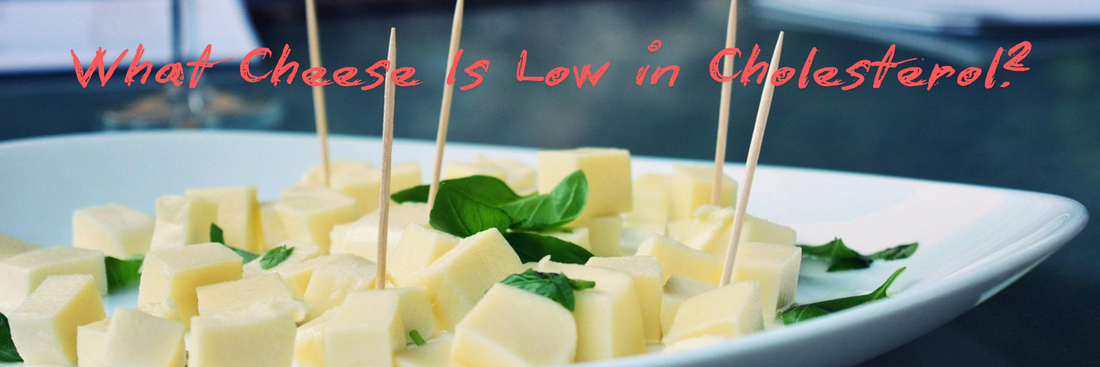Cheese is a beloved staple in many diets worldwide, prized for its rich flavors and nutritional benefits. However, for individuals concerned about high cholesterol, cheese can be a source of confusion and caution. Understanding how cheese affects blood cholesterol, which types are lowest in cholesterol, and how to incorporate it wisely into a heart-healthy diet is essential. This guide explores what cheese is low in cholesterol, why it matters, and offers practical insights into selecting and enjoying cheese without compromising cardiovascular health.
- How Long Cheese Lasts: Must-Know Tips for Every Cheese Lover
- How to Store Cheese Properly (Must-Know Tips for Longer Freshness)
- How to Make a Cheese Board: Easy, Stunning, and Crowd-Pleasing
What Is High Cholesterol and Why Does It Matter?
High cholesterol refers to elevated levels of cholesterol in the blood, particularly low-density lipoprotein (LDL) cholesterol, often called "bad" cholesterol. When LDL cholesterol is too high, it can lead to the buildup of fatty deposits (plaque) in arteries, causing them to narrow and harden a condition known as atherosclerosis. This increases the risk of serious cardiovascular problems such as heart attacks and strokes.

Key reasons why high cholesterol matters include:
- Increased cardiovascular risk: High LDL cholesterol contributes directly to plaque formation, impairing blood flow.
- Silent progression: High cholesterol typically has no symptoms, making regular monitoring essential.
- Influence of lifestyle and diet: Diets high in saturated fats and certain types of cholesterol can exacerbate the problem.
- Impact on overall health: Beyond heart disease, high cholesterol is linked to inflammation and other chronic conditions.
Understanding and managing cholesterol levels is critical for maintaining heart health and preventing long-term complications.
How Cheese Affects Blood Cholesterol
Cheese is a nutrient-rich food, providing protein, calcium, and vitamins, but it also contains cholesterol and saturated fat, which can influence blood cholesterol levels. The effect of cheese on cholesterol depends largely on the type of cheese and the quantity consumed.
- Cholesterol content varies by cheese type: For example, cheddar and Swiss cheeses contain higher levels of cholesterol and saturated fat compared to mozzarella or part-skim ricotta.
- Saturated fat is the main driver: While cheese contains cholesterol, research suggests that dietary saturated fat has a stronger impact on raising LDL cholesterol in the blood.
Which Cheeses Have the Least Cholesterol?
Cheese Cholesterol Chart (Visual Comparison)
When managing cholesterol levels, choosing cheeses with lower cholesterol content can make a significant difference. Here’s a comparison of some of the cheeses with the least cholesterol per ounce, providing a practical guide for healthier cheese choices:
- Cottage cheese (nonfat/low-fat): Approximately 4–18 mg of cholesterol per ounce
- Part-skim ricotta: Around 8.8 mg per ounce
- Part-skim mozzarella: Roughly 15 mg per ounce
- Low-fat Swiss cheese: Between 9–26 mg per ounce
- Nonfat cream cheese: About 2 mg per ounce
- Goat cheese & Parmesan: Moderate cholesterol levels, best consumed in moderation
These cheeses stand out as excellent options for those seeking to lower dietary cholesterol intake without sacrificing flavor or nutritional benefits.
Comparing Cholesterol Levels in Common Cheeses
Cheese varieties differ widely in cholesterol content, influenced by factors such as milk fat content and processing methods. Here’s a deeper look at how common cheeses stack up:
- Cottage cheese: Especially in its nonfat or low-fat forms, cottage cheese is one of the lowest in cholesterol and saturated fat, making it a heart-friendly choice. It also offers high protein and calcium content, supporting bone and muscle health.
- Ricotta cheese: Made from whey, ricotta naturally contains less fat and cholesterol than many hard cheeses. It’s versatile for both savory and sweet dishes and provides a good source of protein and calcium.
- Mozzarella (part-skim): This cheese is lower in cholesterol and saturated fat compared to whole milk mozzarella, making it a popular choice for those monitoring heart health. Its mild flavor and melting properties make it ideal for cooking.
- Swiss cheese: Known for its lower saturated fat content, Swiss cheese also tends to have moderate cholesterol levels, especially in low-fat versions. It’s a flavorful option that fits well in a cholesterol-conscious diet.
- Goat cheese and Parmesan: While these cheeses have moderate cholesterol, their strong flavors mean smaller portions can be used, helping to control intake. Goat cheese may also be easier to digest for some people.
In contrast, full-fat cheddar, American, and processed cheeses tend to have higher cholesterol and saturated fat, which can contribute more significantly to elevated blood cholesterol levels.
Tips on Reading Nutrition Labels
Understanding nutrition labels is crucial when selecting cheeses that align with cholesterol-lowering goals. Here are expert tips to guide your choices:
- Check cholesterol content per serving: Look for cheeses with the lowest milligrams of cholesterol per ounce or serving size.
- Focus on saturated fat: Since saturated fat has a stronger impact on raising LDL cholesterol than dietary cholesterol itself, prioritize cheeses with low saturated fat content.
- Compare fat-free, low-fat, and full-fat options: Fat-free and low-fat cheeses generally have significantly less cholesterol and saturated fat.
- Watch serving sizes: Cheese is calorie-dense; even low-cholesterol varieties can add up if consumed in large amounts.
- Look for sodium levels: Many cheeses are high in sodium, which can affect blood pressure and overall heart health, so choose lower-sodium options when possible.
- Ingredients list: Avoid cheeses with added fillers or preservatives that may impact health negatively.
By carefully reading labels and choosing cheeses with lower cholesterol and saturated fat, you can enjoy cheese as part of a heart-healthy diet without compromising taste or nutrition
- Moderation is key: Consuming cheese in moderate amounts, especially low-fat or reduced-fat varieties, can allow people with high cholesterol to enjoy cheese without significantly raising their LDL levels.
- Emerging research nuances: Some studies indicate that certain cheeses may not increase LDL cholesterol as much as previously thought, but more robust research is needed to confirm these findings.
Incorporating cheese mindfully into a balanced diet, focusing on lower-fat options, helps manage blood cholesterol effectively.
Saturated Fat and Sodium in Cheese – The Real Culprits
While cholesterol in cheese often gets attention, it is the saturated fat and sodium content that pose the greater risk to heart health.
- Saturated fat raises LDL cholesterol: Most cheeses are rich in saturated fat, which can increase the level of LDL cholesterol, leading to arterial plaque buildup and heightened cardiovascular risk.
- Sodium contributes to hypertension: Cheese can be high in sodium, which may elevate blood pressure, compounding the risk of heart disease.
- Variation across cheese types: Hard cheeses like cheddar and blue cheese tend to have higher saturated fat and sodium levels, whereas fresh cheeses like mozzarella and cottage cheese generally contain less.
- Daily limits matter: The American Heart Association recommends keeping saturated fat intake below 6% of total daily calories around 11-13 grams on a 2,000-calorie diet to help control cholesterol.
- Choosing wisely: Opting for low-fat, reduced-sodium cheese varieties or consuming smaller portions can mitigate these risks while still allowing enjoyment of cheese's nutritional benefits.
What Is the Best Cheese to Eat If You Have High Cholesterol?
Managing high cholesterol doesn't mean completely eliminating cheese from your diet. The key is to select specific types of cheese that are lower in saturated fat and cholesterol and to practice moderation.

Nutritionist-Recommended Cheeses
Dietitians suggest several cheese options that can be included in a heart-healthy diet for individuals with high cholesterol. These include:
- Low-fat mozzarella: Especially part-skim versions, it is lower in saturated fat and cholesterol compared to whole milk mozzarella. Part-skim mozzarella typically contains about 18 mg of cholesterol per serving. It is a versatile choice for cooking and melting.
- 2% cottage cheese: This variety is a good source of protein and calcium while being lower in saturated fat and cholesterol.
- Reduced-fat feta: Feta cheese, particularly reduced-fat options, is lower in fat than many other cheeses and can be a flavorful addition to salads and Mediterranean dishes.
- Grated Parmesan (in small portions): While full-fat Parmesan can be high in cholesterol (24 mg/ounce) and saturated fat (4.5 g/ounce), using it as a sparingly grated topping allows for flavor without excessive intake.
- Low-fat Swiss: Swiss cheese generally has less cholesterol compared to many traditional cheeses, with about 26 mg per one-ounce serving, making low-fat versions a good choice.
- Ricotta cheese: Made from whey, ricotta cheese, especially low-fat or part-skim versions, has a lower fat and cholesterol content, making it a better option for managing cholesterol levels.
- Goat cheese: Generally lower in fat and calories than cow's milk cheese, goat cheese can be a good alternative, and its fats may be easier to digest for some individuals.
- Nonfat cheddar cheese: Contains very low cholesterol (5 mg) and no saturated fat per ounce, making it a very heart-healthy choice.
When incorporating cheese into your diet, it's important to be mindful of portions and pair cheese with fiber-rich foods like vegetables or whole grains.
What Is the Healthiest Cheese for Your Heart?
The "healthiest" cheese for your heart is typically one that is low in saturated fat, cholesterol, and sodium. While cheese can be a good source of protein and calcium, excessive saturated fat intake increases the risk of high LDL cholesterol, high blood pressure, and heart disease.
Plant-based cheeses, made from ingredients like nuts, soy, and coconut oil, have improved in variety and taste and can be an option for those looking to manage cholesterol or who have lactose intolerance. Some plant-based cheeses are lower in saturated fat compared to traditional dairy cheeses.
Cheese with Low Sodium and Fat That Supports Heart Health
To support heart health, prioritize cheeses that are not only low in fat and cholesterol but also in sodium. High sodium intake can contribute to elevated blood pressure, which is another risk factor for heart disease.
Some of the best choices for low sodium and fat that support heart health include:
- Low-fat or fat-free cottage cheese: These options are very low in saturated fat and cholesterol.
- Fat-free or low-fat ricotta cheese: Similarly, these versions offer low fat and cholesterol content.
- Part-skim mozzarella: Lower in saturated fat and often moderate in sodium compared to other cheeses.
- Nonfat cheddar cheese: Offers a good flavor with minimal fat and cholesterol.
- Low-fat Swiss cheese: A solid choice with lower saturated fat and cholesterol.
Remember, while specific cheeses are better choices, portion control remains crucial. Even healthier cheeses should be consumed in moderation as part of a balanced diet to effectively manage cholesterol levels and support overall heart health . Using smaller pieces or sprinkling cheese instead of consuming large slices can help manage intake.
Heart-Healthy Cheese – What to Choose and Why
Nutritional Benefits of Cheese: Calcium, Protein, and More
Cheese is often celebrated not only for its rich flavor but also for its impressive nutritional profile, which can support heart health when consumed wisely. Key nutrients in cheese include:
- Calcium: Essential for maintaining strong bones and teeth, calcium also plays a critical role in regulating heart rhythm and muscle function. Adequate calcium intake is linked to lower blood pressure, a major factor in cardiovascular health.
- Protein: Cheese provides a high-quality source of protein, vital for tissue repair, immune function, and maintaining muscle mass. For example, mozzarella delivers over 6 grams of protein per ounce, helping meet daily protein requirements.
- Vitamin K2: Found in fermented cheeses such as cheddar, Muenster, Camembert, and Edam, vitamin K2 helps prevent calcium from depositing in arteries, reducing the risk of arterial calcification and heart disease.
- Probiotics and bioactive compounds: Fermentation produces beneficial microbes and peptides that may improve vascular function and have antioxidant effects, potentially counteracting some of the negative impacts of saturated fat and sodium in cheese.
These nutritional benefits highlight why cheese, when chosen carefully, can be part of a heart-healthy diet rather than a food to avoid altogether.

Studies on Cheese, HDL Cholesterol & Heart Disease Risk
Recent research challenges the traditional view that cheese is detrimental to heart health due to its saturated fat and sodium content. Notable findings include:
- A 2023 review published in Advances in Nutrition found that moderate cheese consumption (about 1.5 ounces per day) was associated with a lower risk of heart disease, stroke, and cardiovascular mortality.
- Fermentation byproducts in cheeses such as Asiago, cheddar, and Parmesan produce compounds similar to ACE inhibitors, which help regulate blood pressure.
- Some studies have shown that cheese consumption may preserve vascular function better than equivalent sodium intake from other sources, possibly due to antioxidant properties.
- Importantly, saturated fat from dairy sources does not appear to increase cardiovascular disease risk as previously thought; in some cases, it may be linked to a lower risk.
- Cheese intake has been associated with improved blood pressure and reduced arterial stiffness, key markers of cardiovascular health.
These insights suggest that cheese can positively influence HDL cholesterol ("good cholesterol") and overall heart disease risk when consumed as part of a balanced diet.
Why Not All Fats in Cheese Are Bad
The fats in cheese are complex and not all equally harmful. While cheese contains saturated fats, some of these fats may have neutral or even beneficial effects on heart health:
- Dairy saturated fats differ from other saturated fats: The specific fatty acids in dairy, such as short- and medium-chain fatty acids, may not raise LDL cholesterol as much as saturated fats from other sources.
- Presence of beneficial fatty acids: Cheese contains conjugated linoleic acid (CLA) and odd-chain fatty acids, which have been linked to anti-inflammatory effects and improved lipid profiles.
- Fermentation modifies fat effects: The fermentation process can generate bioactive peptides that may counterbalance the impact of saturated fat on cholesterol.
- Balance matters: The overall dietary pattern and lifestyle have a greater impact on heart health than isolated saturated fat intake from cheese.
Cheese Tips for a Low-Cholesterol Diet
Portion Control: How Much Cheese Can I Eat with High Cholesterol?
If you have high cholesterol, moderation is essential when enjoying cheese. Cheese contains saturated fat, which can raise LDL (“bad”) cholesterol levels, so keeping intake within recommended limits helps manage heart health effectively. Key guidelines include:
- The American Heart Association recommends limiting saturated fat to less than 6% of daily calories, roughly 11–13 grams on a 2,000-calorie diet.
- A typical serving size of cheese is about 1 to 1.5 ounces (roughly the size of four dice).
- Aim for one to two servings of cheese per day, focusing on lower-fat varieties to stay within saturated fat limits.
- Avoid large portions or multiple cheese-heavy dishes in one meal to prevent excess saturated fat and calorie intake.
- Using cheese as a flavor enhancer rather than the main ingredient helps control portion size without sacrificing enjoyment.
By practicing portion control, you can continue to enjoy cheese while supporting your cholesterol management goals.

Combining Cheese with Fiber-Rich Foods for Better Balance
Pairing cheese with fiber-rich foods can help offset its cholesterol-raising potential and promote heart health:
- Vegetables: Add cheese to salads, roasted veggies, or vegetable-based dishes to increase fiber intake.
- Whole grains: Incorporate cheese into whole-grain sandwiches, wraps, or pasta for a balanced meal.
- Legumes and beans: Combine cheese with beans or lentils in recipes to boost fiber and protein.
- Fiber helps reduce cholesterol absorption in the digestive tract, improving blood lipid profiles.
- This combination also promotes satiety, helping control overall calorie intake.
Balancing cheese with fiber-rich foods supports a more heart-healthy diet and enhances nutrient diversity.
Choose Low-Sodium, Reduced-Fat Versions
Selecting cheeses that are low in sodium and reduced in fat is crucial for managing cholesterol and blood pressure:
- Opt for low-fat or part-skim cheeses such as part-skim mozzarella, reduced-fat feta, 2% cottage cheese, and low-fat Swiss.
- Choose low-sodium options when available, especially for cheeses like Parmesan, which can be very high in salt.
- Fat-free or nonfat cheeses can be good alternatives, though they may vary in taste and texture.
- Always read nutrition labels to compare saturated fat, cholesterol, and sodium content before purchasing.
- Avoid processed cheese spreads or cheeses with added fillers and preservatives, which often contain more sodium and unhealthy fats.
These choices help reduce the intake of saturated fat and sodium, two major contributors to cardiovascular risk.
Cooking Tips: How to Reduce Cholesterol Impact While Enjoying Cheese
You don’t have to give up cooking with cheese entirely; instead, use these strategies to minimize its impact on cholesterol:
- Use cheese sparingly: Sprinkle grated or shredded cheese on dishes instead of large slices.
- Swap high-fat cheeses for lower-fat alternatives: Replace full-fat cheddar with part-skim mozzarella or reduced-fat feta in recipes.
- Incorporate cheese into vegetable-heavy dishes: For example, add a small amount of cheese to vegetable casseroles or stir-fries to enhance flavor without excess fat.
- Mix cheese with herbs and spices: Boost flavor with fresh herbs, garlic, or chili flakes to reduce reliance on cheese quantity.
- Try cheese substitutes: Plant-based or nut-based cheeses can offer lower saturated fat options, though check labels for sodium content.
- Cook with methods that don’t require extra fat: Baking, grilling, or steaming dishes with cheese rather than frying can help keep meals lighter.
By applying these cooking tips, you can enjoy the taste and texture of cheese while keeping your cholesterol and saturated fat intake in check.
What Is Low-Fat Cheese?
Difference Between Low-Fat, Reduced-Fat, and Nonfat Cheeses
Understanding the distinctions between low-fat, reduced-fat, and nonfat cheeses is essential for making informed dietary choices, especially when managing cholesterol and heart health:
- Low-Fat Cheese: Typically contains no more than 3 to 6 grams of fat per 100 grams (approximately 3 grams per serving), representing a significant reduction compared to regular cheese. For example, in the U.S., low-fat cheese must have 6 grams or less of fat per 100 grams. This is achieved by using skimmed or partially skimmed milk and removing cream during production. Low-fat cheeses retain much of the flavor and texture of traditional cheeses but with less fat and fewer calories.
- Reduced-Fat Cheese: Contains at least 25% less fat than the full-fat version of the same cheese. For instance, cheddar reduced-fat cheese might have fat content lowered from 16.6 g to around 12.5 g per 50 g serving. Reduced-fat cheeses often maintain more of the original cheese’s characteristics but with moderate fat reduction.
- Nonfat (Fat-Free) Cheese: Contains virtually no fat, often less than 1.5% fat. These cheeses are made from skim milk and undergo processing to remove almost all fat content. While very low in fat and calories, they may have altered texture and flavor compared to full-fat cheeses.

Pros and Cons of Low-Fat Cheese Options
Pros:
- Lower calorie and saturated fat content: Beneficial for weight management and reducing LDL cholesterol, which supports heart health.
- High in protein and calcium: Low-fat cheeses still provide essential nutrients for muscle repair, bone strength, and overall health.
- Suitable for heart-healthy diets: Reduced saturated fat intake aligns with recommendations to lower cardiovascular risk.
- Versatile in cooking: Many low-fat cheeses can be used in a variety of dishes without drastically changing flavor profiles.
Cons:
- Altered texture and flavor: Low-fat and nonfat cheeses often have higher moisture and less creaminess, which some consumers find less satisfying.
- Potentially higher sodium: To compensate for flavor loss, some low-fat cheeses may contain more salt, which can affect blood pressure.
- Functional limitations: Low-fat cheeses may not melt or stretch as well as full-fat varieties, impacting culinary uses.
- Use of additives: Some low-fat cheeses include fat mimetics or stabilizers to improve texture, which may be a concern for those preferring natural products.
Are Full-Fat Cheeses Always Bad? What Research Says
The traditional view that full-fat cheeses are inherently harmful due to their saturated fat content is being reconsidered in light of emerging research:
- Saturated fat in dairy differs: The specific fatty acids in full-fat cheese, including short- and medium-chain fatty acids, may have a neutral or even beneficial effect on blood cholesterol compared to saturated fats from other sources.
- Fermentation benefits: Full-fat cheeses often contain bioactive compounds from fermentation that may improve vascular health and reduce inflammation.
- No consistent link to increased heart disease: Several studies have found that moderate consumption of full-fat cheese does not increase cardiovascular disease risk and may even be associated with lower risk in some populations.
- Nutrient density: Full-fat cheese provides fat-soluble vitamins like vitamin A and K2, important for bone and cardiovascular health.
- Balance and moderation: The overall dietary pattern and lifestyle have a greater impact on heart health than isolated intake of full-fat cheese.
Frequently Asked Questions (FAQs)

Q1: What cheese has the lowest cholesterol content?
Cheeses with the lowest cholesterol content include fat-free or nonfat cheeses, cottage cheese (especially low-fat or nonfat varieties), and part-skim ricotta. For example, fat-free cream cheese contains about 2 mg of cholesterol per ounce, and nonfat cheddar has around 5 mg per ounce. Low-fat cottage cheese has approximately 4 mg per ounce, making it one of the best choices for those monitoring cholesterol intake.
Q2: Can I eat cheese if I have high cholesterol?
Yes, you can still eat cheese if you have high cholesterol, but moderation and choice of cheese are key. Focus on cheeses lower in saturated fat and cholesterol, such as low-fat mozzarella, reduced-fat feta, and cottage cheese. The American Heart Association recommends keeping saturated fat intake below 6% of total daily calories (about 11–13 grams on a 2,000-calorie diet), so selecting lower-fat cheeses and controlling portions helps manage cholesterol levels effectively.
Q3: How much cheese is safe daily?
For individuals with high cholesterol, it is generally safe to consume one to two servings (about 1 to 1.5 ounces per serving) of low-fat or reduced-fat cheese per day. This helps keep saturated fat and cholesterol intake within recommended limits. Overconsumption of high-fat, high-cholesterol cheeses should be avoided to reduce cardiovascular risk. Using cheese as a flavor enhancer rather than a main ingredient is also advisable.
Q4: Is mozzarella or cheddar better for cholesterol?
Mozzarella is generally better for cholesterol management than cheddar because it typically contains less saturated fat and slightly lower cholesterol per ounce. For example, mozzarella has about 3.9 grams of saturated fat per ounce compared to cheddar’s 5.3 grams, and mozzarella’s cholesterol content is slightly lower or comparable. However, both cheeses can be included in moderation, with part-skim mozzarella being a particularly heart-friendly option
Conclusion
High cholesterol significantly increases cardiovascular risk, but managing it effectively involves understanding the role of diet especially foods like cheese. While cheese contains cholesterol and saturated fat, not all cheeses impact blood cholesterol equally. Choosing lower-fat, lower-cholesterol cheeses such as low-fat mozzarella, cottage cheese, and part-skim ricotta, combined with careful portion control and attention to sodium content, allows you to enjoy cheese without compromising heart health. Reading nutrition labels and moderating intake are essential strategies for incorporating cheese into a balanced, cholesterol-conscious diet.
The right eco-friendly packaging preserves quality, reduces waste, and supports a more sustainable food system. Whether you’re a small food business or a passionate cheese lover, KimEcopak is here to help. Have questions? Reach out and we’ll recommend the best eco-packaging solutions for your cheeses within 24 hours.




